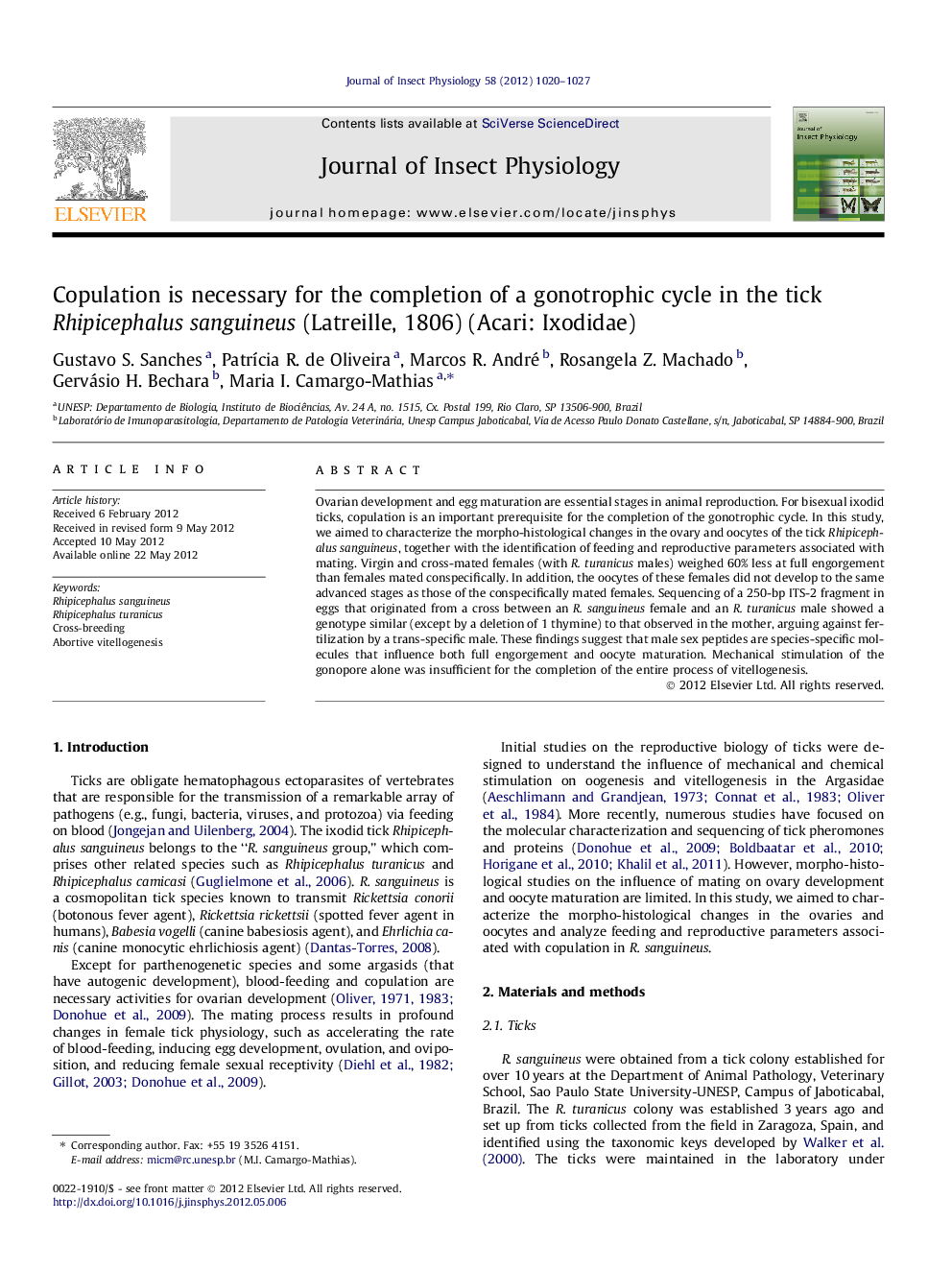| Article ID | Journal | Published Year | Pages | File Type |
|---|---|---|---|---|
| 2840543 | Journal of Insect Physiology | 2012 | 8 Pages |
Ovarian development and egg maturation are essential stages in animal reproduction. For bisexual ixodid ticks, copulation is an important prerequisite for the completion of the gonotrophic cycle. In this study, we aimed to characterize the morpho-histological changes in the ovary and oocytes of the tick Rhipicephalus sanguineus, together with the identification of feeding and reproductive parameters associated with mating. Virgin and cross-mated females (with R. turanicus males) weighed 60% less at full engorgement than females mated conspecifically. In addition, the oocytes of these females did not develop to the same advanced stages as those of the conspecifically mated females. Sequencing of a 250-bp ITS-2 fragment in eggs that originated from a cross between an R. sanguineus female and an R. turanicus male showed a genotype similar (except by a deletion of 1 thymine) to that observed in the mother, arguing against fertilization by a trans-specific male. These findings suggest that male sex peptides are species-specific molecules that influence both full engorgement and oocyte maturation. Mechanical stimulation of the gonopore alone was insufficient for the completion of the entire process of vitellogenesis.
Graphical abstractFigure optionsDownload full-size imageDownload as PowerPoint slideHighlights► Conspecific copulation triggers a complete gonotrophic cycle in R. sanguineus. ► Virgin females feed partially and only oocytes stage I through III were observed. ► Cross-mated females showed lower weight than females mated with conspecific male. ► Cross-mated females did not show oocyte development beyond stage III. ► Abortive vitellogenesis was observed in oocytes from cross-mated females.
